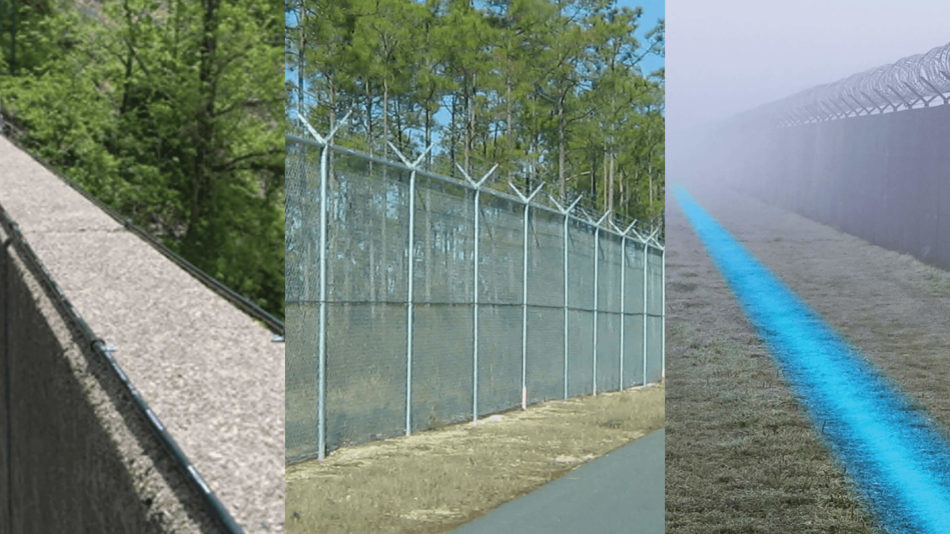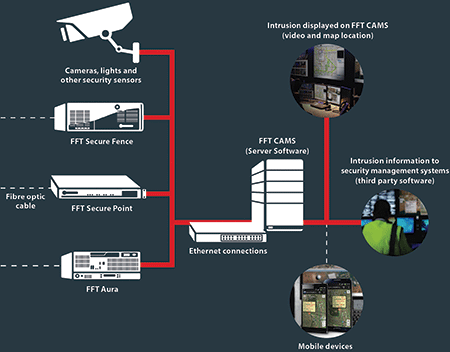Boost Your Safety With Advanced Fiber Optic Security Systems
In an age where safety and security is vital, innovative fiber optic protection systems present a compelling service for boosting safety across different atmospheres. What implications do these innovations hold for future safety and security measures?
Benefits of Fiber Optic Protection
Harnessing the advantages of fiber optic technology dramatically boosts safety and security systems throughout different applications. One of the main benefits is the raised data transfer ability, enabling the transmission of huge quantities of data at high speeds. This is particularly important for real-time video monitoring, where high-resolution feeds can be sent without latency, making sure immediate feedback abilities.
In addition, fiber optics exhibit superior resistance to electromagnetic interference, which is crucial in environments with potential signal disturbances. This integrity guarantees regular efficiency in important security operations. Furthermore, fiber optic cables are less vulnerable to touching and unapproved accessibility compared to standard copper circuitry, thus boosting data integrity and confidentiality.
One more remarkable advantage is the resilience of fiber optic systems; they are more immune to ecological aspects such as wetness, temperature fluctuations, and harsh compounds. This durability converts to lower maintenance expenses and longer life expectancies for security installments.
Last but not least, the light-weight nature of fiber optic wires facilitates much easier setup and routing, specifically in complicated infrastructures (fiber optic security system). Ultimately, the integration of fiber optic innovation into security systems not just strengthens security procedures yet also optimizes functional performance
Trick Functions to Take Into Consideration
When reviewing fiber optic safety and security systems, several vital attributes must be thought about to make certain ideal efficiency and efficiency. Evaluate the system's detection array and level of sensitivity; an extensive range permits for monitoring large locations, while high sensitivity guarantees that also minor disturbances are identified immediately.
Next, think about the assimilation abilities of the system. A fiber optic protection system ought to flawlessly interface with existing security steps such as video cameras and alarms, creating a natural safety and security network.
Longevity and environmental resistance are likewise crucial functions. Make certain that the system is created to withstand extreme weather and potential physical risks, as this will extend its operational life expectancy.

Last but not least, look into the scalability of the system. A robust fiber optic security system must be easily expanding to accommodate future needs without significant overhauls. By carefully thinking about these functions, you can select a fiber optic security solution that improves safety and security and security in your setting.
Installation Process Review
To effectively execute a fiber optic safety system, a systematic installment process is recommended you read essential. This process starts with a comprehensive site analysis to determine the specific protection demands and to recognize optimum locations for fiber optic cable televisions and safety gadgets. Following this evaluation, the installment team will certainly develop an in-depth strategy, including cable pathways, required other equipment, and conformity with neighborhood policies.
Next, the setup includes laying the fiber optic wires, ensuring they are safeguarded from ecological elements and physical damages. Proper handling techniques are essential, as fiber optic wires are sensitive and can be quickly damaged. After the cabling is mounted, connectors and terminations are diligently completed to guarantee signal honesty.
The subsequent stage contains installing security gadgets such as cameras, movement detectors, and alarm, all incorporated with the fiber optic network. Strenuous testing is carried out to confirm that all parts are functioning appropriately and to guarantee ideal efficiency.

Comparing Fiber Optic to Conventional Equipments
The development of safety modern technology has caused considerable developments in the comparison in between fiber optic systems and conventional copper-based systems. Fiber optic systems use light to send information, supplying premium transmission capacity and rate contrasted to their copper equivalents. This results in enhanced data transmission abilities, making fiber optics excellent for high-resolution video clip security and real-time tracking.
Additionally, fiber optic cables are immune to electromagnetic interference, decreasing the possibility of signal destruction triggered by external elements. This particular makes certain constant performance, even in difficult settings. On the other hand, standard copper systems are a lot more prone to disturbance, causing prospective vulnerabilities in safety and security applications.
Toughness is one more advantage of fiber optic systems. They are less vulnerable to harm from ecological aspects such as dampness and temperature level variations, which can endanger copper wiring. Fiber optics are lighter and thinner, permitting for much easier installation and minimized click site physical impact.
However, conventional systems have a tendency to have lower initial costs, making them attractive for budget-conscious jobs. While fiber optic systems might call for a greater ahead of time investment, their long-lasting advantages-- such as lower upkeep prices and higher integrity-- usually surpass the initial expenditure, positioning them as a superior choice for modern-day safety and security needs.
Future Trends in Security Innovation
Arising trends in security technology are poised to change the landscape of security and danger discovery - fiber optic security system. As companies significantly deal with innovative hazards, developments such as expert system (AI) and artificial intelligence (ML) are coming to be indispensable to security systems. These innovations enhance the ability of fiber optic systems by making it possible for real-time data evaluation, recognizing abnormalities, and automating responses to potential violations
Additionally, the integration of the Internet of Points (IoT) is changing security structures. IoT tools can give detailed situational understanding and assist in seamless communication in between various safety parts. This interconnectedness enables a lot more effective monitoring and faster occurrence reaction times.
Biometric verification is additionally obtaining momentum, offering a greater level of safety and security through unique physical features. As this modern technology advances, it is likely to be included into fiber optic systems for boosted gain access to control.
Final Thought
Finally, advanced fiber optic safety and security systems represent a significant improvement in safety and security and surveillance technology. Their exceptional transmission capacity, resistance to disturbance, and longevity help with dependable monitoring and data integrity. As these systems integrate AI and IoT capacities, they boost the total safety and security framework, making sure robust defense for possessions. The change from traditional systems to fiber optic services reflects a growing trend in the direction of extra reliable and efficient protection measures in a progressively complicated technological landscape.